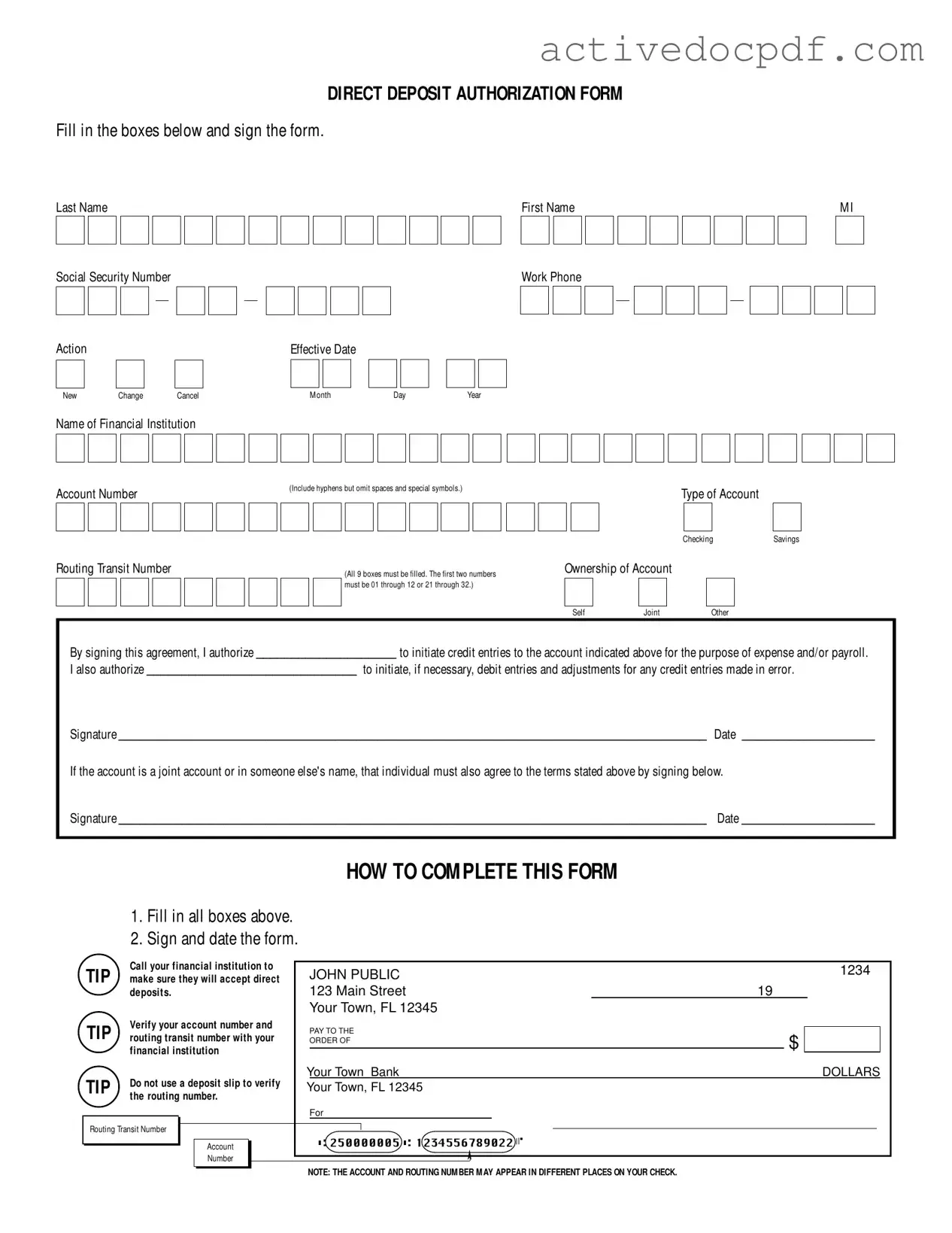Free Generic Direct Deposit PDF Form
The Generic Direct Deposit Authorization Form is a document that allows individuals to authorize their employer or another entity to deposit funds directly into their bank account. This streamlined process facilitates timely and secure payments, whether for payroll or other expenses. Completing this form requires providing essential information, such as account details and signatures, to ensure accurate transactions.
Edit Form Online
